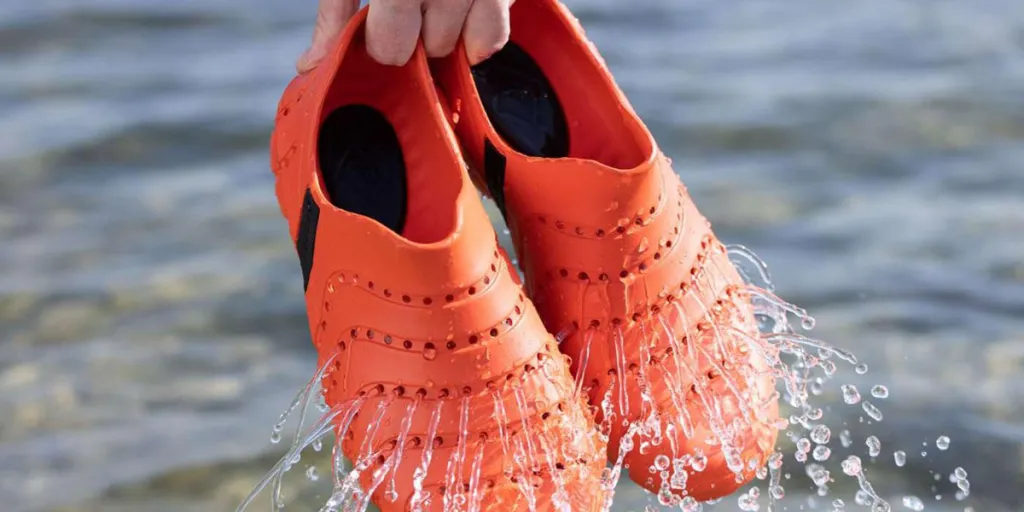Water booties are ideal for consumers who love exploring tidal pools, snorkeling vibrant reefs, or battling winter swells. With these water shoes, users can save themselves from the dangers of going barefoot on slippery rocks and sharp shells. But before business buyers can add them to their inventories, they must first understand the various types and benefits in order to stock up on the best options. Luckily, this article will dive deep into everything businesses should know about these versatile water shoes in 2024.
Table of Contents
Water booties and their key benefits for consumers
The types of water booties
Features to look for when stocking up on water booties
Features to avoid when selling water booties
Rounding up
Water booties and their key benefits for consumers
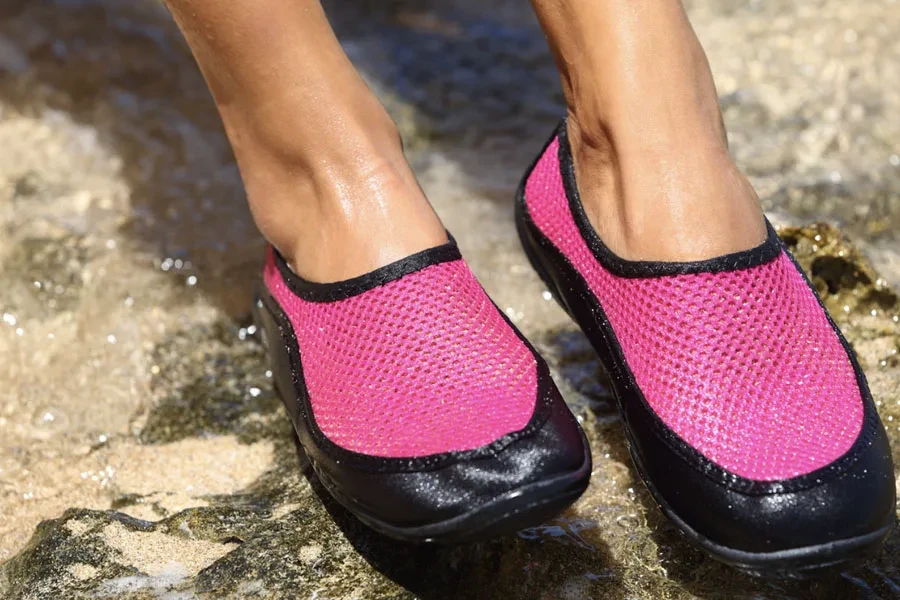
Consumers don’t have to ruin their shoes or go barefoot to enjoy some water time. Water booties (or shoes) are the perfect way to get their feet comfortable and protected with traction in wet environments. Fun fact: These shoes are nothing like traditional shoes, and their benefits prove it. Here are a few marketable benefits of booties over traditional shoes.
Protection
Wet and murky environments often contain dangerous elements like sharp rocks, shells, corals, sharp objects, or even hazardous wildlife animals (like rockfish or sea urchins). Consumers who wear booties can protect themselves from disastrous accidents. How? They come with protective barriers that keep the feet from nasty dangers, preventing or reducing the risk of abrasions, punctures, cuts, and other water-related injuries.
Quick drying
Unlike regular shoes, manufacturers equip water booties with quick-dry and water-resistant materials. Usually, the top picks are breathable mesh, synthetic fabrics, and neoprene. In addition to these materials, water booties also come with drainage holes—allowing water to escape and air to circulate easily. This feature is responsible for its speedy drying process and anti-odor-causing bacteria feature.
Traction and grip
Wet surfaces can become slippery quickly, and feet (or regular shoes) can’t provide enough traction to counter them. However, water booties come with specially designed soles that give consumers the traction to walk confidently on wet rocks or boat decks.
Versatility
While they are great in watery environments, water booties also have some versatility. Many variants come with stylish designs, allowing consumers to transition seamlessly from water activities to casual outings without negotiating their fashion style.
The types of water booties
Open-toe water booties
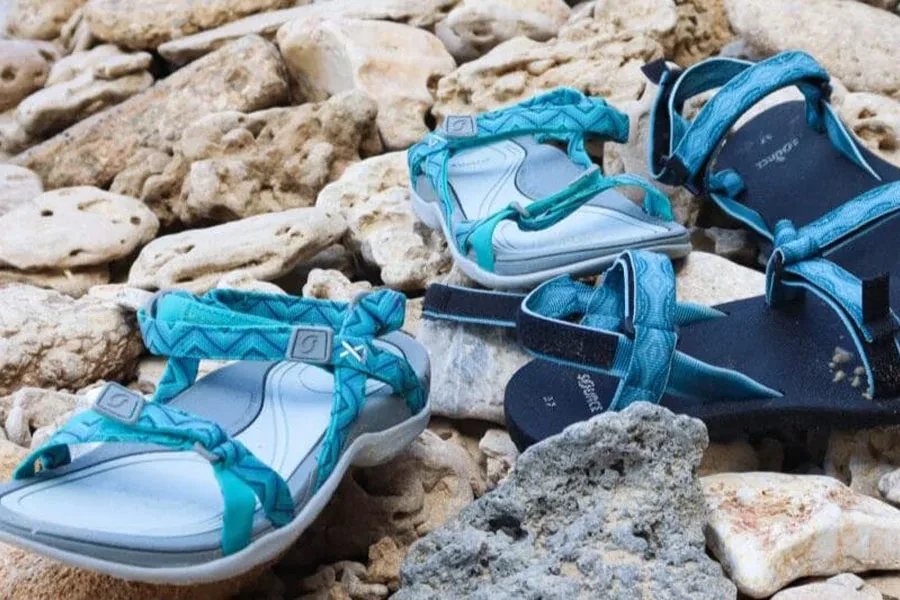
These water sandals offer the most breathability and water drainage. Since they offer impressive comfort and lower toe protection, users can only use them for casual water adventures and beach walks. Even better, many models come with bungee cord lacing systems or adjustable straps for a more secure fit, allowing consumers to walk faster without worrying. Buyers who prioritize comfort will love these options because of the open-toe feature, allowing their feet to be well-aerated in aquatic environments.
Closed-toe water booties
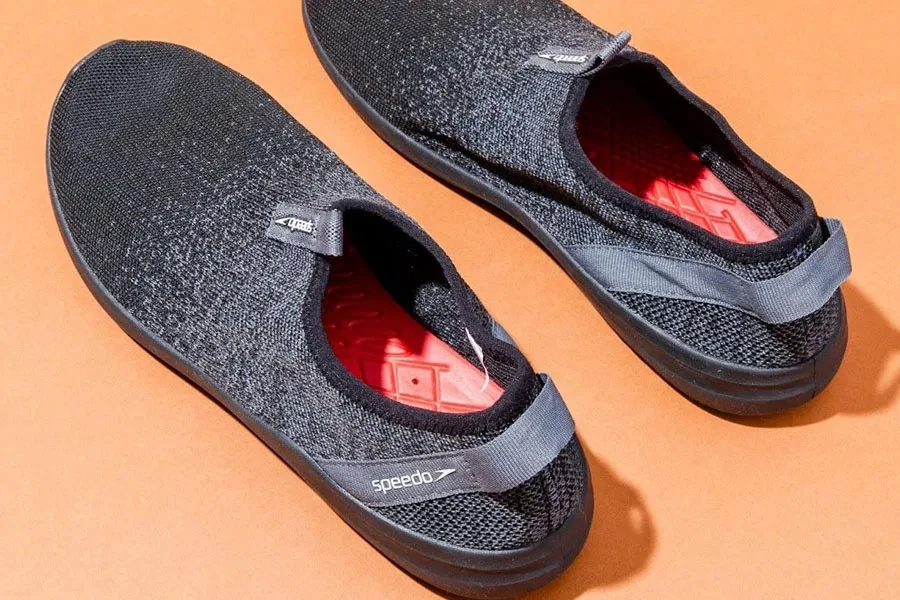
While open-toe variants focus more on easy comfort, closed-toe water booties provide maximum protection. For this reason, adventurous consumers who ply rugged terrains with potentially hazardous objects in the water will love closed-toe water booties. Their toe caps, made from sturdy and fortified materials or rubber, further reinforce that they do a great job protecting the toes from stubbing or impact when moving through rocky riverbeds or any challenging watery environments.
Neoprene booties
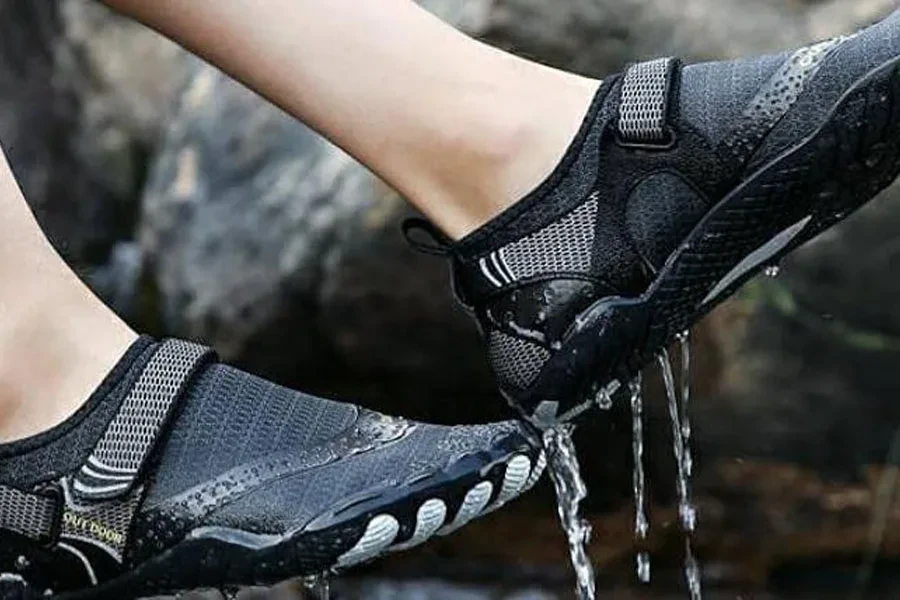
Some water activities (like paddleboarding, surfing, and diving) require specialized shoes for maximum effectiveness—that’s where neoprene booties shine the most. As their name implies, manufacturers make these booties from neoprene, which gives the feet excellent warmth, insulation, and protection. Business buyers should note that these booties come in different thicknesses, depending on their preferred water temperature. Hence, it’s wise to let the buyers know so they can choose them based on their preferences.
Canyoneering booties
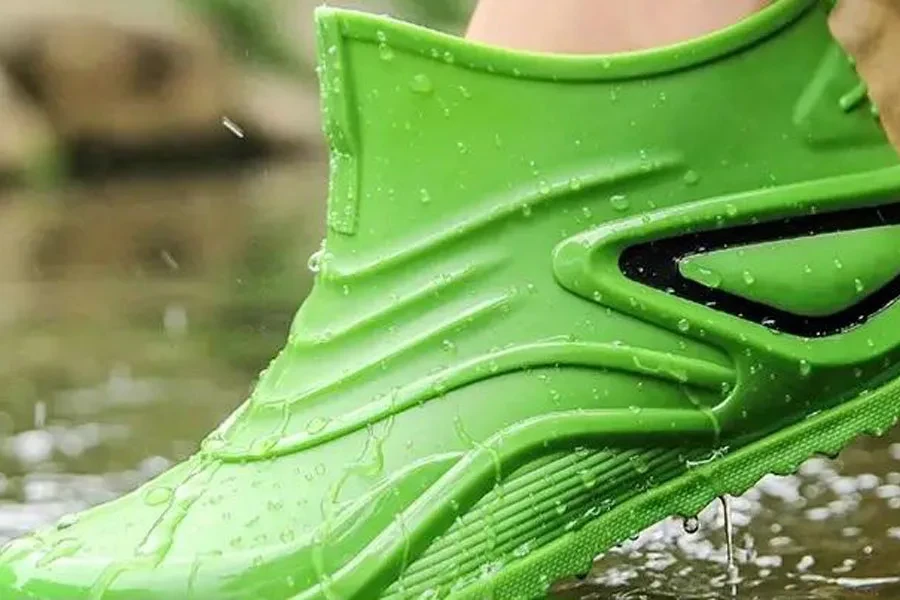
As the name implies, these booties are the perfect options for consumers who love canyoneering. Considering the high intensity of the water sport, more heavy-duty booties specially designed for withstanding tough terrains are the ideal option to help navigate canyons. These water-resistant shoes can handle hiking, rappelling, climbing, and traversing wet, rugged terrains. No matter how demanding the canyoneering adventures are, these boots have all the bells and whistles to handle—from comfort, grip, and durability.
Features to look for when stocking up on water booties
Water-friendly materials
Water-resistant and quick-drying materials are the first features to look out for in booties. Business buyers must focus on models made from breathable mesh, neoprene, hydrophobic coatings, or synthetic fabrics. As mentioned earlier, these materials offer many advantages, like quick water drainage, water retention prevention, and dry/comfortable feet throughout water activities—all necessary qualities of the ideal water booties for consumers.
Grip and traction
All water booties offer improved traction, but some do better than others. So, how can a business buyer identify booties with high-quality grip and traction? The answer is in the outsoles—they must be rubber and should have specialized patterns, multi-directional treads, or lugs. These designs give high-quality water shoes enough grip and traction to prevent slips and falls.
Comfort
What makes a comfortable water shoe? Simple! The booties’ cushioned insoles, arch support, and ergonomic designs should be a top priority. Also, water shoes with well-padded collars and tongues can provide enough comfort for the feet.
Breathability and ventilation
One reason people don’t wear regular shoes for water activities is moisture buildup. It’s a terrible situation that leads to nasty odors. But it shouldn’t be the same for water booties. Rather, water booties should promote proper airflow and prevent moisture buildup. Hence, businesses must prioritize water booties with breathable mesh uppers or strategically placed ventilation panels for better air circulation. Water booties should keep the feet cool and dry, not vice versa.
Durability
No one wants water booties that become unusable after a few wears. Hence, businesses must focus on models with durable designs that can withstand the stress of water activities. Look for water booties featuring sturdy construction, reinforced stitching, and abrasion-resistant overlays. These features indicate the chosen models will offer maximum wear time.
Features to avoid when selling water booties
Limited drainage
Water shoes without effective drainage outlets are a bad sell. With limited drainage, the booties become soggy and uncomfortable during extended wear. Even worse, they won’t dry fast and smell terrible. Business buyers should avoid them at all costs—not risking this key feature for design. If not, they may get a lot of return sales or not even have repeat buys—which isn’t good for business.
Low-quality materials
Never try to cut corners on water shoe materials. Going cheap on these booties can negatively impact their durability and performance. Steer clear from water booties featuring low-quality materials. They may come with an inexpensive price tag but easily stretch excessively or deteriorate quickly—which is terrible for future sales.
Inadequate sizing and fit
Sellers must also avoid selling oversized or smaller sizes to consumers. If the water booties don’t fit properly, they cause blisters, instability, or chafing. Oversized booties are also uncomfortable—as they can lead to accidental slips or falls. The rule of thumb is to ensure the water booties are the exact size the consumers want to give them a more secure and comfortable fit.
Poor traction
Imagine consumers’ faces if they slip while wearing “quality” water shoes. The next thing that follows would be raging reviews and refund requests. For this reason, sellers must not pick water booties with insufficient or low-quality outsoles. Avoid them if they are thin, slipper, or non-grippy—they aren’t safe for consumers.
Rounding up
High-quality water booties can easily enhance target consumers’ aquatic adventures. However, before businesses can make their consumers happy, they must tick all the features discussed in this article when choosing between the different water booty types. Ready to cater to a part of the 135,000 consumers searching for water booties? Use this blog as a guide to finding the best options in 2024. And finally, remember to subscribe to the Chovm Reads’ Sports section for similar updates about trending products.
